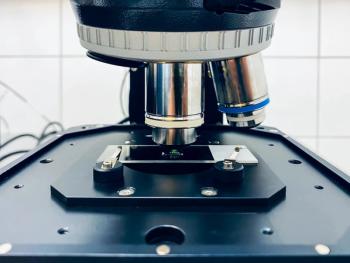
Limited Data Available on HPV Vaccine Immunogenicity, Efficacy in People Living With HIV
Researchers summarized the limited available data on human papillomavirus (HPV) vaccine efficiency and immunogenicity in people living with HIV and gave insight into topics for further research.
Despite people living with
Researchers noted that PLH are more vulnerable to HPV and related diseases, making them a high-priority vaccination group. They explained that HPV vulnerability in the PLH population is associated with immune dysfunction, mucosal abnormalities, and increased exposure due to behavioral patterns.
Despite this vulnerability, the researchers explained that the only knowledge on the safety and immunogenicity of HPV vaccines in this population comes from studies with small sample sizes. Consequently, they summarized the available knowledge on HPV vaccine efficiency (VE) and immunogenicity in PLH and listed additional research topics.
All guidelines for HPV vaccination in PLH, including those of the CDC, the European AIDs Clinical Society, and the British HIV Association, agree on the importance of maintaining the 3-dose schedule. The researchers noted that publications on HPV vaccine safety within PHLs reported that bivalent, quadrivalent, and nonvalent vaccines were safe and tolerable based on safety data from vaccine usage among men and women, children in clinical trials, and postlicensure surveillance.
“The number of serious adverse events (SAEs) reported in studies including PLHs are similar regardless of the vaccine type received, with incident rates of SAEs mostly ranging from 0 to 7%,” the authors wrote.
Regarding the immunogenicity of HPV vaccines among PLH, the researchers determined that the vaccines result in a durable and robust neutralizing antibody response with higher titers than seen with natural infection; peak antibody titers were observed 4 weeks after the first vaccination within clinical trials of majority immunocompetent individuals.
The review authors also found that PLH with CD4 counts below 200 cells/mm3 and detectable viral load (VL) have lower seropositivity rates and geometric mean titers (GMTs) than those with well-controlled PLH. Consequently, more data are needed to understand the influence of CD4 counts, VL, and antiretroviral therapy (ART) on vaccine response, especially among participants reconstituting their immune status despite HIV infection.
Researchers noted that the long-term durability of immune response in PLH has not been studied sufficiently due to the relatively recent availability of HPV vaccines.
“Since HPV vaccines were introduced in 2006 and are mainly indicated in teenagers and young adults, there are no data regarding the persistence of the immune response in older PLH,” the authors wrote.
Similarly, in terms of clinical efficacy of HPV vaccines, researchers explained that there is evidence that VE against HPV vaccine-type infection, as well as vaginal, cervical, and vulvar neoplasia in women and anogenital neoplasia in men, remains high 10 years after vaccination in immunocompetent individuals. However, a small number of studies focused specifically on demonstrating VE in PLH.
Consequently, the researchers reviewed several possible strategies to optimize HPV vaccine response and improve the durability of protection. One strategy reviewed was administering a fourth dose of the quadrivalent vaccine at 72 weeks after the last vaccination. This was studied in children living with HIV (CLH) and found to lead to significantly higher antibody titers at a 4- to 5-year follow-up. On the other hand, it did not improve the rate of antibody decline over time or make a difference in seropositivity.
Lastly, the researchers indicated various areas where further research is needed. They pointed out the need for more data to understand how CD4/CD8 counts and HIV VL influence vaccine response within the PLH population, especially in those who have experienced immune reconstitution due to ART. They also explained the need for further research on the vaccine’s impact on transgender patients with HIV and patients who inject drugs.
Overall, researchers stressed the importance of prioritizing studies that address the durability of immune response and its potential impact on VE because of the current insufficient amount of information on both cellular and humoral responses beyond 2 years post vaccination.
“Randomized controlled trials comparing VEs between different vaccine formulations and schedules in PLH are essential to dictate future recommendations,” the authors concluded. “Optimized vaccination strategies, in combination with improved screening and treatment procedures, can potentially reduce the burden of HPV disease in PLH.”
Reference
Losada C, Samaha H, Scherer EM, et al. Efficacy and durability of immune response after receipt of HPV vaccines in people living with HIV. Vaccines. 2023;11(6):1067. doi:10.3390/vaccines11061067
Newsletter
Stay ahead of policy, cost, and value—subscribe to AJMC for expert insights at the intersection of clinical care and health economics.















































